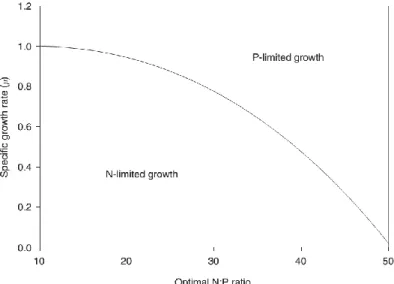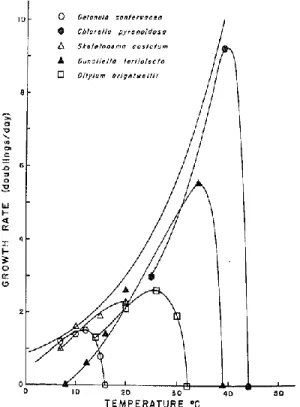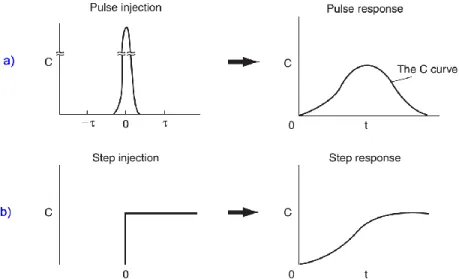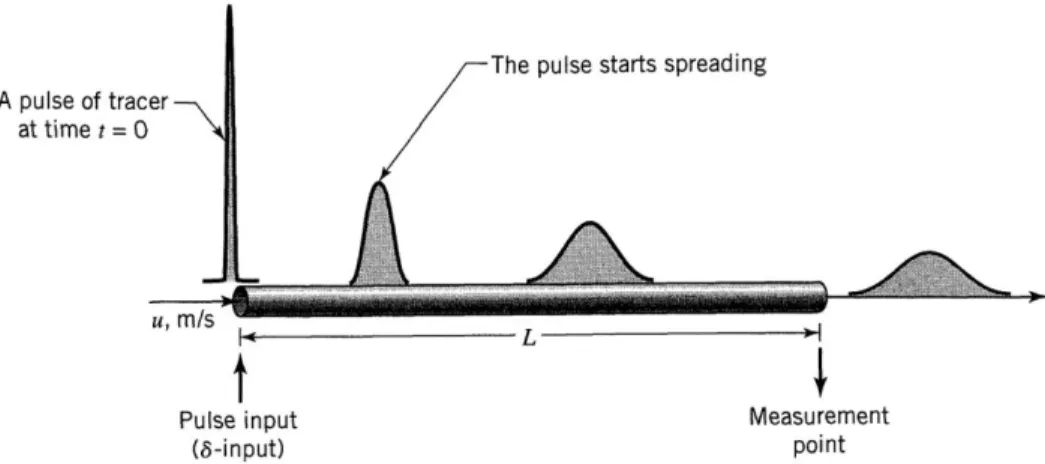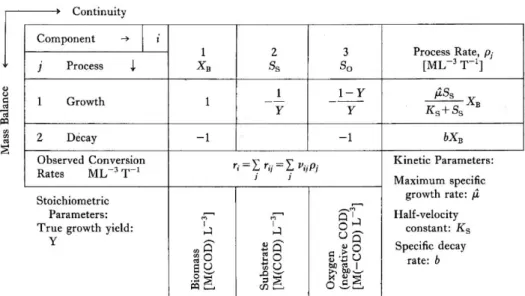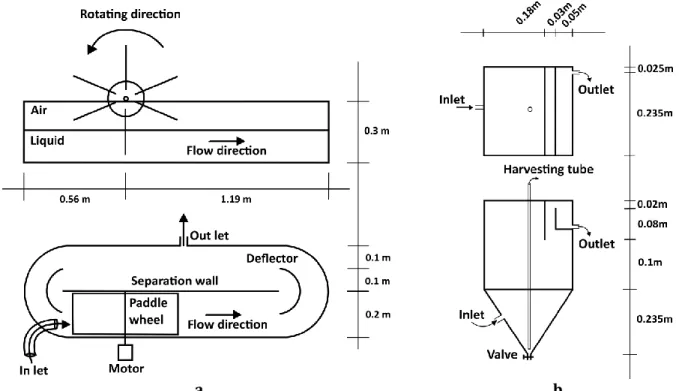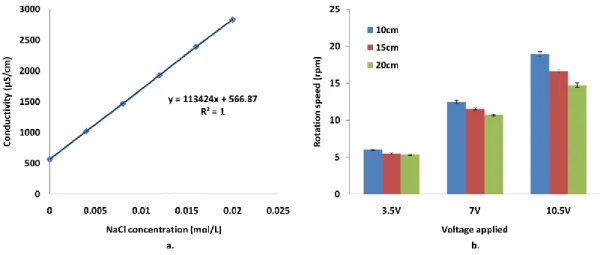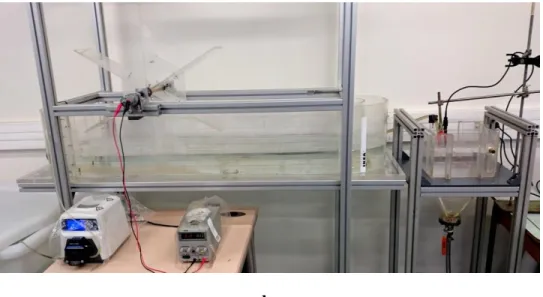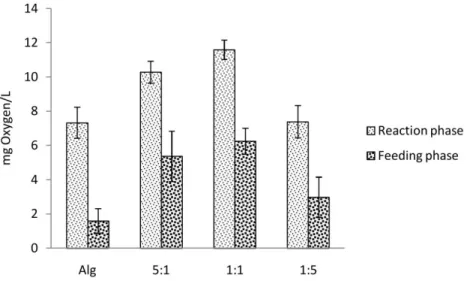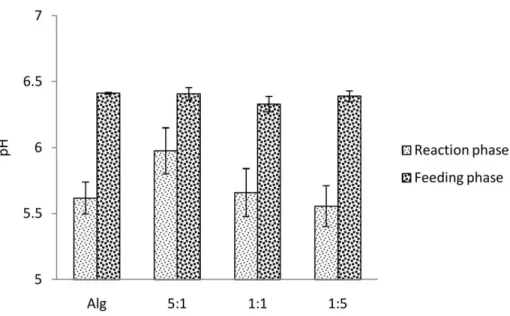HAL Id: tel-02160484
https://tel.archives-ouvertes.fr/tel-02160484
Submitted on 19 Jun 2019HAL is a multi-disciplinary open access archive for the deposit and dissemination of sci-entific research documents, whether they are pub-lished or not. The documents may come from teaching and research institutions in France or abroad, or from public or private research centers.
L’archive ouverte pluridisciplinaire HAL, est destinée au dépôt et à la diffusion de documents scientifiques de niveau recherche, publiés ou non, émanant des établissements d’enseignement et de recherche français ou étrangers, des laboratoires publics ou privés.
Algal-bacterial consortium in high rate algal pond :
evaluation of performances, wastewater nutrient
recovery and experimental and numerical models based
design
Le Anh Pham
To cite this version:
Le Anh Pham. Algal-bacterial consortium in high rate algal pond : evaluation of performances, wastewater nutrient recovery and experimental and numerical models based design. Ecotoxicology. Université de Strasbourg, 2018. English. �NNT : 2018STRAD023�. �tel-02160484�
1
UNIVERSITÉ DE STRASBOURG
ÉCOLE DOCTORALE 269 (MSII)
ICube UMR 7357
THÈSE
présentée par:
Le Anh PHAM
soutenue le : 13 Septembre 2018
pour obtenir le grade de :
Docteur de l’université de Strasbourg
Discipline/ Spécialité
: Energie et génie des procédés / Traitement des eaux
Consortium Algues-Bacteries Des Lagunes A Haut
Rendement Algal: Evaluation Des Performances,
Devenir Des Nutriments Des Eaux Usees Et Conception
A Base De Modeles Experimentaux Et Numeriques
THÈSE dirigée par :
WANKO NGNIEN Adrien MCF - HDR, ENGEES/Laboratoire ICube LAURENT Julien MCF - HDR, ENGEES/Laboratoire ICube RAPPORTEURS :
MOLLE Pascal Ingénieur de recherche - HDR, IRSTEA Lyon CABASSUD Corinne Professeure - HDR, Insa Toulouse
AUTRES MEMBRES DU JURY :
ERNST Barbara Professeur, DSA - IPHC
2
Le Anh PHAM
Consortium Algues-Bacteries Des Lagunes A Haut Rendement Algal: Evaluation Des Performances,
Devenir Des Nutriments Des Eaux Usees Et Conception A Base De Modeles Experimentaux Et
Numeriques Résumé
La présente thèse porte sur des travaux expérimentaux et de modélisation visant à étudier les processus bactériens et algaux au sein d’une lagune { haut rendement algal (HRAP). Un système pilote HRAP a été construit et les impacts des différentes conditions opérationnelles sur l’hydrodynamique et le transfert gaz/liquide du pilote ont été étudiés. De plus, le rapport d'inoculation optimal entre les algues et les bactéries (Al-Bac) a également été étudié. La biomasse Al-Bac a ensuite été inoculée dans le système HRAP pour une évaluation à long terme du traitement des eaux usées et de la récupération des nutriments. Le HRAP dans cette étude peut être appliqué en traitement secondaire de eaux usées ou comme étape primaire éliminant rapidement les charges élevées de DCO et de TKN des retour en tête de digesteurs anaérobies (centrats). Les résultats expérimentaux obtenus ont également été utilisés pour calibrer et valider des modèles de type « boîte noire » et mécanistes. Les deux modèles peuvent décrire le fonctionnement à long terme du système. Le premier permet ainsi d'évaluer rapidement les performances du système ainsi que de le dimensionner, tandis que le second simule avec succès les résultats à long (général) et à court (détaillé) terme. L'étape suivante devrait être l'application du système à grande échelle.
Mots-clés: algues, bactéries, lagune à haut rendement algal (HRAP), modélisation,
récupération des nutriments, traitement des eaux usées.
Abstract
The thesis focused on both experimental and modeling works aiming to investigate the algal bacterial processes in High-Rate Algal Pond (HRAP) system. A pilot HRAP system was built and the impacts of different operational conditions on hydraulic and gas transfer rate of the pilot were investigated. Moreover, optimal inoculation ratio between algae and bacteria (Al-Bac) was also studied. The Al-Bac biomass was then inoculated in the HRAP system for long term assessment of wastewater treatment and nutrient recovery. The HRAP in this study can be applied for secondary treatment application or as a primary step removing rapidly high loads of COD and TKN from centrate wastewater. Experimental results obtained were also employed in calibrating and validating black box and comprehensive algal bacterial models. Both models could describe the system in long term. The former was adequate for giving quick assessment of the system performance as well as sizing application while the latter successfully simulated the results both in long (general) and short (detailed) time scale. A next step should be applying the system in large scale.
Keywords: algae, bacteria, high rate algal pond (HRAP), modeling, nutrient recovery,
3
English title: Algal-Bacterial Consortium in High Rate Algal Pond: Evaluation of
Performances, Wastewater Nutrient Recovery And Experimental and Numerical Models Based Design.
4
Acknowledgements
Firstly, to my supervisors Dr. Adrien WANKO and Dr. Julien LAURENT, as well as Dr. Paul BOIS, another member of “the Fantastic Three”, thank you for your helps, guidances and motivations throughout my PhD. Your supports are not only limited in the research but also in many other aspects of life. I have learned a lot from you and I appreciate it.
I would like to thank the members of my dissertation jury for their time and intellectual contributions to my thesis. Your advices and discussions are also valuable to me for my further development as a scientist.
I also couldn’t finish my PhD without valuable helps from technical staff of ENGEES. Particularly, I would like to send my special thanks to Marie, Carole from LEE/ENGEES for their technical support on sample analysis. Thank you for welcoming me to France and always warning me the closing date of the supermarket. Besides, I also received many helps while working in Icube Boussingault, therefore, I want to thank Abdel, Martin, Joary, Fabrice and many other persons in Icube for your valuable supports. I also want to thank people working in the wastewater treatment plant in Wantenauze for your valuable support during my sampling campaign. Particularly, I would like to thank Mr. PIERRE Frédéric, Directeur Développement, Valorhin, who is also being in my jury as invited member. Your supports as well as practical advices helped me a lot in up-scaling perspective.
My life in Strasbourg could be much more difficult without valuable support of my colleagues and friends. Mamad, Max, Milena, Florent, Pulcherie, Teddy, Loic, Gille, Eloise, Inest, thank you very much for your valuable helps in so many aspects of my life. My thanks also come to my colleagues and friends from across the Atlantic Ocean. Juan, I will never tell to anyone how you become a memorable PhD student to Professor Robert. For Elena, your life threaten accidence in the wastewater treatment plant will be safe with me and please accept my apologize for that. In addition, my PhD in France could be more difficult without my Vietnamese friends. I want to thank Hải, Minh, Hường, Duy, Lan, Sơn, Oanh, H{, Mi, Bình Đẳng and others friends in Vietnamese Student Union of Strasbourg (AEVS) for making my life more enjoyable.
Last but not least, I want to thank my family for constant encouragement and love from home while I’m far away. For my wife Van, I have been saying this for many times but maybe it is the first time I say it in English, “thank you very much for your love and care, without you, I couldn’t be as I am today, I love you”.
i
TABLE OF CONTENTS
LIST OF FIGURES ... v
LIST OF TABLES ... viii
LIST OF ABBREVIATIONS ... ix
INTRODUCTION ... 1
1. Context and state of the art ... 1
2. Aims and Objectives ... 3
3. Thesis outline ... 5
4. Thesis contribution ... 7
PART I LITERATURE REVIEW ... 9
CHAPTER 1 ALGAL BACTERIAL PROCESSES IN HRAP UNDER DIFFERENT INFLUENCING FACTORS ... 9
1.1 Introduction... 9
1.2 Algal-bacterial interactions in wastewater treatment processes ... 10
1.2.1 The interaction between algae and bacteria in wastewater environment ………10
1.2.2 High Rate Algal Pond (HRAP) system ... 13
1.3 The factors impacting algal and bacterial processes in wastewater treatment ………16
1.3.1 Nutrients... 16
1.3.2 Environmental factors ... 21
1.3.3 Operational factors ... 25
1.4 Conclusions ... 26
CHAPTER 2 HYDRAULIC, KINETIC AND GAS-LIQUID MASS TRANSFER STUDIES OF THE HIGH RATE ALGAL POND ... 28
2.1 Introduction... 28
2.2 Hydraulic study ... 28
2.2.1 Experimental methods ... 29
2.2.2 Hydraulic study – the RTD model ... 31
2.3 Reaction kinetic model ... 36
2.3.1 Reaction types ... 36
2.3.2 Reaction rate determination – coupled hydraulic and kinetic model ... 38
ii
2.4.1 The gas transfer rate and volumetric gas transfer coefficient ... 39
2.4.2 Dynamic method ... 42
2.5 Conclusions ... 43
CHAPTER 3 KINETIC MODELING OF THE ALGAL-BACTERIAL PROCESSES IN WASTEWATER ... 45
3.1 Introduction... 45
3.2 Model frameworks and kinetics ... 46
3.2.1 Impact of light ... 48
3.2.2 Impact of temperature ... 51
3.2.3 Nutrient factors ... 52
3.2.4 Algal bacterial biomass loss ... 54
3.2.5 Impact of gas-liquid mass transfer ... 55
3.3 Conclusions ... 56
PART II MATERIALS AND METHODS ... 58
CHAPTER 4 EXPERIMENTAL METHODS FOR STUDYING ALGAL BACTERIAL PROCESSES IN WASTEWATER ... 58
4.1 Algae and activated sludge inoculations preparation ... 58
4.2 Experimental operations ... 60
4.3.1 Batch experiment to determine optimal algal bacterial inoculation ratio ………60
4.3.2 Pilot experiment to determine the impact of different wastewater types, hydraulic retention times and light intensities on the performance of HRAP ... 63
CHAPTER 5 HYDRAULIC AND GAS-LIQUID MASS TRANSFER STUDIES OF PILOT HRAP………. ... 69
5.1 Operational conditions applied ... 69
5.2 Mixing characteristics and residence time distributions in HRAP ... 70
5.3 Volumetric mass transfer coefficient (kLa) in HRAP ... 73
5.4 Sensitivity analysis ... 74
CHAPTER 6 COUPLING RTD AND MIXED-ORDER KINETIC MODELS FOR HRAP PERFORMANCE ASSESSMENT AND SIZING APPLICATION ... 75
6.1 RTD and mixed-order kinetic models description ... 75
6.1.1 Hydrodynamic (RTD) model... 75
6.1.2 Coupling RTD and mixed-order kinetic models ... 76
iii
6.2 Data analysis ... 79
PART III RESULTS AND DISCUSSIONS ... 80
CHAPTER 7 FINDING OPTIMAL ALGAL/BACTERIAL INOCULATION RATIO TO IMPROVE ALGAL BIOMASS GROWTH AND SETTLING EFFICIENCY ... 80
7.1 Introduction... 80
7.2 Biomass growth... 81
7.3 Biomass settleability ... 82
7.4 Nutrient removal efficiency ... 83
7.5 Dynamics of dissolved oxygen and pH ... 84
7.6 Final choice of optimal inoculation ratio ... 86
7.7 Conclusions ... 87
CHAPTER 8 IMPACTS OF OPERATIONAL CONDITIONS ON OXYGEN TRANSFER RATE, MIXING CHARACTERISTICS AND RESIDENCE TIME DISTRIBUTION IN A PILOT SCALE HIGH RATE ALGAL POND ... 89
8.1 Water flow regime ... 90
8.2 Paddle wheel vs water level on HRAP performance in closed condition ... 90
8.3 Dominant effect of paddle wheel on oxygen transfer in HRAP ... 92
8.4 Operational conditions impacts on HRAP performance in closed condition .. 93
8.5 Impacts of operational conditions on residence time distributions in HRAP 94 8.6 Optimal operational conditions for algal-bacterial growth in HRAP ... 96
8.7 Conclusions ... 97
CHAPTER 9 LONG-TERM WASTEWATER TREATMENT BY ALGAL BACTERIAL BIOMASS IN HIGH RATE ALGAL POND (HRAP): IMPACT OF NUTRIENT LOAD AND HYDRAULIC RETENTION TIME ... 99
9.1 Impact of different nutrient loads and HRTs on wastewater treatment ... 99
9.2 Impact of different nutrient loads and HRTs on biomass growth and recovery ………..103
9.3 Impact of different nutrient loads and HRTs on algal bacterial dynamic ... 106
9.4 Conclusions and Perspectives ... 110
CHAPTER 10 SIMULATION OF LONG TERM WASTEWATER TREATMENT BY A HIGH RATE ALGAL POND: COUPLING RTD AND MIXED-ORDER KINETIC MODELS: PERFORMANCE ASSESSMENT AND SIZING APPLICATION ... 112
10.1 Coupled RTD and mixed-order kinetic model simulating long term HRAP operation ... 113
iv
10.1.2 Model evaluation ... 114
10.2 Relationship between experimental and model parameters ... 117
10.3 Coupled RTD and mixed-order kinetic model applied for sizing HRAP .... 119
10.4 Conclusions and Perspectives ... 120
CHAPTER 11 SIMULATION OF ALGAL BACTERIAL PROCESSES IN WASTEWATER TREATMENT HIGH RATE ALGAL POND – A GOOD MODELING PRACTICE APPLICATION… ... 123
11.1 Introduction ... 123
11.2 Project definition ... 124
11.3 Data collection and reconciliation ... 125
11.3.1 Data collection ... 125
11.3.2 Additional measurements ... 127
11.4 Al-Bac model set-up for HRAP system ... 128
11.4.1 Model layout ... 128
11.4.2 Algal bacterial kinetic model ... 128
11.4.3 Influent and effluent models ... 139
11.4.4 Settler model ... 140
11.4.5 Aeration model ... 140
11.5 Calibration and validation ... 140
11.6 Conclusions and Perspectives ... 146
CONCLUSIONS AND PERSPECTIVES ... 148
1 General conclusions of the thesis ... 148
2 General perspectives ... 150
APPENDIX ... 155
v
LIST OF FIGURES
Figure I Thesis outline illustration. ... 7 Figure 1-1 General illustration of algal-bacterial processes in wastewater (big arrows
indicate main processes, normal arrows indicate mass transferring between phases). ... 12 Figure 1-2 Cross-sectional side view of a HRAP with CO2 aeration (Park et al., 2010). ... 14
Figure 1-3 Distribution of nitrogen in a treatment system with nitrification (Sperling, 2007). ... 18 Figure 1-4 Illustration of algal specific growth rate depending on the optimal N:P ratio
(Richmond, 2008). ... 20 Figure 1-5 Typical photosynthesis–irradiance response curve with Pmax is maximum
photosynthetic rate reached at saturating irradiance (Ek) while Ec is irradiance
compensation point (Barsanti and Gualtieri, 2006). ... 21 Figure 1-6 Growth rate versus temperature curves for five unicellular algae with
different optimal temperature (Eppley, 1972). ... 23 Figure 2-1 The exit age distribution curve E for fluid flowing through a vessel; also
called the residence time distribution, or RTD (Levenspiel, 1999). ... 29 Figure 2-2 The RTD measurements following a) pulse method and b) step method
(Fogler, 2006b). ... 30 Figure 2-3 Illustration of the tracer pulse spreading due to axial dispersion according to
the dispersion model (adapted from Levenspiel, 1999). ... 33 Figure 2-4 Illustration of the Tanks-in-Series model (Levenspiel, 1999). ... 35 Figure 3-1 Example of using Peterson’s matrix for presenting process kinetics and
stochiometry for aerobic growth of heterotrophic bacteria (Henze et al., 1987). 48 Figure 3-2 PFS model illustration (Wu and Merchuk, 2001). ... 50 Figure 3-3 Illustration of death-regeneration with hydrolysis. ... 55 Figure 4-1 Location of the wastewater treatment plant in Rosheim, Bas-Rhin, Grand Est,
France (sources: http://www.map-france.com/ and
https://en.wikipedia.org/wiki/Rosheim). ... 59 Figure 4-2 Microscopic images (black line indicates 0.01mm) of dominant groups in the
algal consortium including (a.) Chlorella sp., (b.) Ulothrix sp., (c.) Scenedesmus sp., (d.) Pseudanabaenaceae sp., and (e.) Nitzschia sp. ... 60 Figure 4-3 a. Real picture of a working reactor and b. Experimental protocol illustration:
highlighted arrows - shifting between phases, normal arrows - biomass, physiochemical and biochemical measurements, dashed arrows – exchange aqueous phase with fresh synthetic wastewater. ... 61 Figure 4-4 Side view and top view of a. the pilot HRAP and b. the settler. ... 64 Figure 4-5 General illustration of pilot HRAP experimental set-up (arrows indicate
water and biomass flow, red dashed lines indicate measurements). ... 66 Figure 5-1 Correlations between a. NaCl concentration and conductivity in the water
and b. voltage, water level and paddle rotational speed. ... 70 Figure 5-2 a. General illustration of pilot HRAP with tracer experiments in open
condition (normal figures and text), in closed condition (dashed figure and italic text) and oxygen transfer rate experiments in closed condition (dashed figures,
vi
italic text in brackets). And b. Actual figure of the experimental setup in open condition. ... 73 Figure 6-1 General procedure of HRAP simulation. ... 78 Figure 7-1 Global Al-Bac biomass and Chl-a productivities of biomass with different
initial algae/activated sludge ratios (error bars indicate variances of fitted values and observed values). ... 81 Figure 7-2 Average with standard error of dissolved oxygen (DO) concentration in
different test reactors during reaction phase and feeding phase. ... 85 Figure 7-3 Average with standard error of pH in different test reactors during reaction
phase and feeding phase. ... 86 Figure 8-1 Influence of paddle rotational speed, water level to Bodenstein number (a.)
and water velocity (b.) in pilot HRAP. ... 91 Figure 8-2 Absolute-Relative sensitivity (dimensionless) of Bodenstein number versus
paddle rotational speed (a.) and water level (b.). The sign represents positive (no sign) or negative (- sign) correlation. ... 92 Figure 8-3 Influence of paddle wheel rotation, water level to oxygen transfer coefficient
in pilot HRAP. ... 93 Figure 8-4 Absolute-Relative sensitivity (d-1) of oxygen transfer coefficient (kLaO2)
versus paddle rotational speed (a.) and water level (b.). The sign represents positive (no sign) or negative (- sign) correlation. ... 93 Figure 8-5 Average Relative-Relative sensitivities (dimensionless) of oxygen transfer
coefficient and Bodenstein number versus water level and paddle rotational speed. Data was converted to absolute value for comparison. ... 94 Figure 8-6 Influence of inlet flow rate (a, d, f), paddle wheel rotation (b, e, g) and water
level (c, f, h) to effective volume fraction (ϵ: a, b, c), Short-circuiting Index (SI (%): d, e, f) and Peclet number (Pe: g, h, i) in pilot HRAP. ... 96 Figure 9-1 COD, N and P concentrations at the influent and effluent of the HRAP (data of
LN_4d modality fit with left scale, data of HN_4d and HN_8d modalities fit with right scale)... 100 Figure 9-2 Al-Bac biomass and Chl-a concentrations in the HRAP for different
modalities. ... 104 Figure 9-3 Al-Bac biomass and Chl-a production during the entire pilot experiment. .. 106 Figure 9-4 Example of decomposition of time series DO data (time scale in days and DO
data in mg/L). ... 107 Figure 9-5 Time decomposition of time series pH data recorded two weeks before (a.)
and after (b.) feeding wastewater with high nutrient load in the HRAP (time scale in days). ... 108 Figure 10-1 Experimental COD data at the effluent (diamond with error bars indicating
measurement uncertainty) of different modalities (graph title with best fit order in brackets) fitted to the coupled RTD and mixed-order kinetic model (line). ... 115 Figure 10-2 Experimental TN data at the effluent (diamond with error bars indicating
measurement uncertainty) of different modalities (graph title with best fit order in brackets) fitted to the coupled RTD and mixed-order model (line). ... 117 Figure 10-3 Experimental TKN data at the effluent (diamond with error bars indicating
measurement uncertainty) of different modalities (graph title with best fit order in brackets) fitted to the coupled RTD and mixed-order model (line). ... 117
vii
Figure 10-4 PCA biplot showing relationships between various experimental and model parameters for different modalities. In the figure, Chl_a and Bio_tot refer to concentrations of Chlorophyll a and total biomass in HRAP. Inlet_i and E_i are the inlet concentration and average removal efficiency of substance i, respectively. While n_i, k_i and r_i are optimal reaction order, reaction rate constant and reaction rate of related to removal process of substance i, respectively. ... 119 Figure 10-5 HRAP sizing following low light (a.) and high light models (b.) with the color
bar indicates mean residence required. ... 120 Figure 11-1 General illustration of the HRAP simulation procedure. ... 125 Figure 11-2 Experimental (dots) and simulated (lines) TSS (a.), nitrate (b.), ammonium
(c.), and nitrite (d.) nitrogen values in the HRAP for 85 days since the day 55. Measured TSS data was used for model calibration, 20% variation was calculated from the simulated result (a.). ... 142 Figure 11-3 Experimental (dots) and simulated (line) DO and pH in the HRAP for 85
days since the day 55. ... 143 Figure 11-4 Experiment (dot) and simulation (line) data of DO concentration in HRAP
from day 62 to 66 (a.) and from day 93 to 97 (b.). ... 144 Figure 11-5 Experiment (dot) and simulation (line) data of pH in HRAP from day 58 to
61 (a.) and from day 76 to 79 (b.). ... 145 Figure 11-6 Simulated concentrations of algae, heterotrophic, ammonium oxidizing and
viii
LIST OF TABLES
Table 1-1 Design characteristics of different HRAPs. ... 14
Table 1-2 Outdoor HRAP systems for wastewater treatment in different conditions. .... 16
Table 4-1 Ingredients and measured nutrient contents of synthetic wastewater. ... 62
Table 4-2 Operational characteristics of different stages. ... 65
Table 6-1 Data of the HRAP performance for different modalities. ... 79
Table 7-1 Average Chl-a and TSS contents in the effluent and their proportions in total Chl-a and TSS contents of each reactor. ... 83
Table 7-2 Nutrient concentrations at the outlet of four reactors (mg/L, mean values in bold, n=9). ... 84
Table 8-1 Reynolds and Froude numbers for different operational conditions. ... 90
Table 9-1 Removal rates and removal efficiencies of COD, TKN, TN and TP for different modalities. ... 103
Table 9-2 Physio-chemical and biomass monitoring parameters for different modalities. ... 105
Table 9-3 Variances of decomposed DO (mg/L) and pH data for different modalities. . 109
Table 10-1 Optimal reaction orders n and reaction rate constants k in (mg/L)1-n/day for different modalities and pollutant. ... 114
Table 11-1 Influent, HRAP and effluent measurements of the HRAP system, results are given in average with standard deviation. Number of samples is given in brackets. ... 127
Table 11-2 Model process rates. ... 132
Table 11-3 Model parameters. ... 133
Table 11-4 Stoichiometric parameters. ... 135
Table 11-5 Mass fraction of elements on organic compounds. ... 135
Table 11-6 Stoichiometric coefficients. ... 136
Table 11-7 Mathematic expressions of stochiometric coefficients in each process. ... 137
Table 11-8 Influent (I) and effluent (E) models. ... 139
Table 11-9 Ratios of different particulate species over total TSS in the HRAP in steady state simulation. ... 141
ix
LIST OF ABBREVIATIONS
ADM anaerobic digestion model AOB ammonium oxidizing bacteria ASM activated sludge model ASM-A activated sludge model - algae BNR biological nutrient removal Bo bodenstein number
BOD biological oxygen demand CAS conventional activated sludge CFD computational fluid dynamics CO2 carbon dioxide
COD chemical oxygen demand content CSTR continuous stirred tank reactor DO dissolved oxygen concentration EPS extracellular polymeric substances Fr froude number
GMP good modelling practice GRG2 generalized reduced gradient HRAP high rate algal pond
HRP high rate pond
HRT hydraulic retention time
IWA International Water Association NOB nitrite oxidizing bacteria
NSE nash-sutcliffe efficiency index
OECD organization for economic cooperation and development OPR oxygen production rate
OTR oxygen transfer rate OUR oxygen uptake rate P/I photosynthetic-irradiance PCA principle components analysis PCB polychlorinated biphenyl Pe peclet number
PFR plug flow reactor PSF photosynthetic factory PHA poly-hydroxy-alkanoates Re reynolds number
RSS residual sum of squares RTD residence time distribution RWQM river water quality model SBR sequencing batch reactor SI short-circuiting index SRT solids retention time TIS tank-in-series
TKN total Kjeldahl nitrogen TN total nitrogen
TP total phosphorus
x
VSS volatile suspended solids WWTP wastewater treatment plant
1
INTRODUCTION
1. Context and state of the art
Although covering two-thirds of the Earth’s surface, yet only a small fraction of water (less than 0.5%) is readily available for human use (UNESCO, 2015). Together with modern pressures such as population and economic growth, more and more people are facing water scarcity every year. Around the world, 2.1 billion people are lacking of safely managed water in which 844 million people have no access to basic drinking water service (WHO, 2015). Until 2017, the main part of global water use is for agriculture (accounting for 70%) and it is increasing (15% more by 2050). Ground water is pumped at faster rate than it is recharged (World Bank, 2017). In this context, wastewater treatment plays a vital role of accelerating the purification of water in nature (US EPA, 1998) and redistributing water for agriculture (FAO, 1992).
Conventional wastewater treatment is the combination of physical, chemical, and biological processes that can achieve various levels of treatment depending on the water reuse applications (FAO, 1992). The levels are preliminary, primary (and advanced primary), secondary (and/or secondary with nutrient removal), tertiary, and advanced treatments (Abdel-Raouf et al., 2012; Noüe et al., 1992; Tchobanoglous et al., 2002). Among them, primary and secondary treatments are the basic stages: the primary stage focuses on removing settleable organic and inorganic solids by sedimentation while the secondary treatment further removes the residual organics and suspended solids from the effluent from primary treatment. Tertiary and further treatments are required if necessary (FAO, 1992; US EPA, 1998). In most cases, aerobic biological treatment with oxygen supplementation (high rate biological process) is the dominant process in secondary stage in which the bacterial activities are triggered by artificial oxygen addition to metabolize the organic matter leaving new biomass and inorganic nutrients as the end-products. Activated sludge, trickling filters, and rotating biological contactors are the most common high rate processes with the first one being the most popular (US EPA, 1998).
Despite the fact that 85% of organic matters and suspended solids can be removed after secondary treatment, inorganic phosphorus and nitrogen are still available in the effluent which can cause secondary pollution requiring further step to be removed (FAO, 1992). These additional steps (usually biological nitrification and denitrification) also increase the total cost which may be doubled for each additional step. Moreover, the nutrients (nitrogen and phosphorus) contained in wastewater are generally lost during these treatments leading to incomplete utilization of natural resources (Noüe et al., 1992). In that context, microalgae received early attraction due to its photosynthetic ability utilizing the nutrient in wastewater and light to generate new biomass and oxygen that is required by organic matter stabilization (Oswald and Gotaas, 1957). Therefore, the application of algae for wastewater treatment and biofuels production is promising, especially in the recent
2
context of fuel shortage and climate change that raise the need of sustainable development (Pittman et al., 2011; Rawat et al., 2011).
Despite this potential, there are several bottlenecks to tackle to further develop this technology. One of them is harvesting algal biomass. Due to the small size of the algal cells and their low concentration in culture solution, efficient harvesting of algal biomass from water can account for 20-30% of total production cost (Mata et al., 2010; Pragya et al., 2013). One solution is to enhance algal biomass settleability by bio-flocculation in which activated sludge and algae are inoculated to form algal bacterial biomass. Although the technique has been shown to improve biomass settling while keeping good treatment efficiency (Gutzeit et al., 2005; Van Den Hende et al., 2011a), the inoculation ratio is still diverse and its application in pilot scale is still lacking.
In order to apply algal based wastewater treatment at large scale, many efforts have been spent to study the use of photobioreactor systems to improve algal growth (Muñoz and Guieysse, 2006). Among them, high rate algal pond (HRAP) showed strong advantages including low energy consumption and financial requirement, ease of maintenance and feasibility in expanding to large scale (Mata et al., 2010). As a consequence, HRAP system was applied in many places with wide range of environmental and hence operational conditions (Picot et al., 1991; El Hamouri et al., 1995; Grönlund et al., 2010). In addition, variation in operational condition can influences hydrodynamics and hence gas transfer which are important especially in open aerobic biological reactor like HRAP (Garcia-Ochoa and Gomez, 2009). Therefore, determining the impacts of operational conditions on hydrodynamics and thus gas transfer in HRAP system is necessary.
In addition, although application of algal-bacterial biomass in HRAP system for wastewater treatment and biomass production is promising, the dynamic between algae and bacteria and its impact on long term performance of the system is still lacking. In addition, in recent years, anaerobic digestion has become a popular solution for bioenergy production and the use of its liquid effluent as nutrient source of HRAP system promoting nutrient recovery has been attracting (Sawatdeenarunat et al., 2016). Hence, the impact of high nutrient load from anaerobic digestion effluent on the algal bacterial dynamic deserves serious attention. Due to the complexity of algal bacterial process which involves the dependence of many interactions between different algal bacterial species inside the system on the variation of different operational and environmental conditions (Cole, 1982; Kouzuma and Watanabe, 2015), the system is difficult to control and thus yet to be applied widely in industrial scale (Mata et al., 2010). In this context, using mathematics model to simulate the algal-bacterial processes could serve as a rapid and cost-effective method to study the system in order to improve, manage and enlarge it in bigger scale. Extensive studies have been conducted to develop comprehensive algal bacterial models (Buhr and Miller, 1983; Reichert et al., 2001; Solimeno et al., 2017) providing a deep insight into the processes occurring in the system, especially when coupling with advanced hydrodynamic model such as computational fluid dynamics (CFD) model (Nauha and Alopaeus, 2013; Wu and Merchuk, 2001). Despite of
3
these achievements, more efforts are still required to improve the simulation in terms of hydrodynamics, light attenuation or gas transfer of the algal bacterial system (Solimeno and García, 2017). Moreover, a guideline for selecting factors and framework in model construction simulating algal growth is also lacking (E. Lee et al., 2015).
Another modeling approach requiring only influent and effluent wastewater characteristics is the classical black box reaction kinetic model (Levenspiel, 1999). Although only considering global kinetic behavior of the system, the model was widely used for designing purpose of the wastewater system providing satisfactory results (Henze, 2008). Hence the application of this model type to the HRAP system is attractive especially when HRAP is implemented in remote areas requiring quick and simple assessment. Also, since deviation from the ideal hydraulic condition in the reactor is a common problem and always influence the performance of the system, a coupled kinetic and hydraulic model is a necessary step to improve the simulation by considering imperfect flow patterns in the system (Fogler, 2006a). Therefore, efforts also should be made on investigating the application of coupled global hydraulic and reaction kinetic model in performance assessment and sizing of HRAP system.
2. Aims and Objectives
This thesis is conducted to understand the cooperation between algae and bacteria in wastewater treatment and biomass production in order to improve the system performance. The two main aspects included are experimental and modeling parts.
The experimental part consists of lab scale and pilot scale experiments:
Batch reactors were inoculated with different ratios and fed with synthetic
wastewater in order to compare different algae/activated sludge inoculation ratios in terms of algal growth, treatment efficiency and biomass settling. Hence the optimal algal bacterial inoculation ratio can be chosen.
A pilot HRAP was constructed and the impacts of operational conditions including
water level, inlet flow rate and paddle wheel movement on hydrodynamics as well as gas transfer in the pilot were investigated. An optimal operational condition will be chosen to apply in the pilot HRAP for algal-bacterial biomass cultivation.
Then, a long-term experiment was conducted to evaluate the dynamic between
algae and bacteria under medium and high nutrient loads within a pilot scale HRAP inoculated with optimal algal-bacterial biomass. The performance of the system was assessed in terms of treatment efficiency, biomass production and recovery. Impact of hydraulic retention time (HRT) variation in high nutrient load condition on the system was also investigated.
4
In the modeling part, both comprehensive algal bacterial kinetic model and black box hydraulic and reaction kinetic model are developed. Data gathered from the pilot experiment was used to calibrate and validate the models:
- A mixed-order kinetic model was coupled with a Residence Time Distribution (RTD)
model to simulate the data obtained from different long term experiments conducted in the pilot scale HRAP. The relationships between different environmental and operational conditions including light intensity, nutrient loading or hydraulic retention time (HRT) and the model parameters including the reaction order and reaction rate constant were evaluated. In a further step, the model obtained was applied in a HRAP sizing application.
- An algal bacterial model simulating algal bacterial processes in the HRAP system was also developed following Good Modelling Practice unified protocol (Rieger et al., 2012) to investigate the dynamic of these processes.
In French:
Cette thèse vise à mieux comprendre la coopération entre les algues et les bactéries dans un objectif de traitement des eaux usées et de production de biomasse. Deux aspects principaux sont développés : d’une part l’étude expérimentale du procédé et d’autre part sa modélisation.
La partie expérimentale consiste en des expériences à l'échelle du laboratoire et à l'échelle pilote:
- Des réacteurs en discontinu ont été inoculés avec différents ratios algues/bactéries
et alimentés avec des eaux usées synthétiques afin de comparer les différents ratios en termes de croissance des algues, d'efficacité du traitement et de décantation de la biomasse. On peut donc choisir le rapport optimal d'inoculation.
- Une lagune à haut rendement algal (HRAP) pilote a été construite et les impacts des
conditions opérationnelles, comprenant le niveau d'eau, le débit d'entrée et le mouvement de la roue à aubes sur l'hydrodynamique ainsi que le transfert de gaz dans le pilote ont été étudiés. Les conditions opératoires optimales seront choisies pour la culture de biomasse algale-bactérienne.
- Ensuite, une expérience pilote à long terme a été menée pour évaluer la dynamique
entre les algues et les bactéries avec des charges modérées et élevées en nutriments. Les performances du système ont été évaluées en termes d'efficacité de traitement, de production de biomasse et de sa récupération. L'impact de la variation du temps de rétention hydraulique (HRT) dans des conditions de charge élevée en nutriments a également été étudié.
Concernant la modélisation, deux approches sont développées : d’une part, un modèle complet des cinétiques bactérienne et algale et d’autre part, un modèle de type « boîte
5
noire » couplant l’hydrodynamique et les cinétiques réactionnelles. Les données recueillies dans le cadre de l'expérience pilote ont été utilisées pour caler et valider les modèles:
- Un modèle cinétique d'ordre mixte a été utilisé en association avec un modèle de Distribution des Temps de Séjour (RTD) pour simuler les données obtenues à partir de différentes expériences menées à l'échelle pilote . Les relations entre les différentes conditions environnementales et opérationnelles, y compris l'intensité lumineuse, la charge en éléments nutritifs ou le temps de rétention hydraulique (HRT) et les paramètres du modèle, y compris l'ordre de réaction et la constante de vitesse de réaction, ont été évaluées.
- Un modèle biocinétique simulant les processus bactériens et algaux dans le système
HRAP a également été développé selon le protocole unifié des bonnes pratiques de modélisation (Rieger et al., 2012) pour étudier la dynamique de ces processus.
3. Thesis outline
General outline of this thesis is illustrated in Figure I. Experimental and modeling works with the links between chapters in one part as well as between parts are described.
Part I covers detailed description of the biochemical processes of algae and bacteria in
general as well as in HRAP system in particular. Different studying methods for hydraulics, gas transfer and modeling of the HRAP are also described. This part includes:
Chapter 1: Reviewing knowledge concerning the processes of algae and bacteria in
wastewater including synergistic and antagonistic interactions. It is also reviewing the knowledge concerning the use of HRAP in wastewater treatment and the factors impacting algal and bacterial growth in HRAP for wastewater treatment and biomass production.
Chapter 2: Information concerning the systemic hydraulic study methods and
gas-liquid mass transfer of HRAP is introduced.
Chapter 3: Providing the knowledge concerning kinetic model simulation methods
of algae and bacteria in HRAP system.
In Part II, the materials and methods of experimental and modeling works are introduced. The part consists of three chapters relating to biochemical, hydraulic and gas transfer, and modeling studies:
Chapter 4: Describing the materials and methods to study algal bacterial
wastewater treatment, growth and biomass settling in both lab scale and pilot scale experiments.
Chapter 5: The pilot HRAP constructed as well as materials and methods related to
6
Chapter 6: Providing the simulation methods of the coupled hydraulic and kinetic black box model.
Part III provides the results of the study with discussions. Five chapters are included:
Chapter 7: Studying how different inoculation ratios between algae and activated sludge impact growth, nutrient removal and biomass settling. Results obtained are also discussed to obtain the best ratio for applying at pilot scale.
Chapter 8: Different experiments to determine mixing characteristics, RTD and gas
transfer coefficient under different operational conditions are described and based on these results, the optimal operational conditions for biomass cultivation in the pilot are chosen.
Chapter 9: Results obtained from the long term experiment of the HRAP are analyzed and discussed to highlight the impacts of different nutrient loads and HRTs on HRAP performance. The impact of light on the system is also discussed.
Chapter 10: The correlation between black box model and experimental parameters
are discussed revealing some insight knowledge on the algal bacterial processes in different operational conditions. Based on the model, a HRAP sizing application is also conducted.
Chapter 11: Following the IWA GMP unified protocol, a comprehensive model
describing algal bacterial processes in the HRAP is constructed, calibrated and validated. The simulation results under various conditions are also discussed. In order to keep the clear structure of the thesis, all the model construction and description were included in this chapter.
Finally, general conclusions and perspectives of the thesis are provided in the Conclusions
7
Figure I Thesis outline illustration. 4. Thesis contribution
The work described in the first part of chapter 4 and the entire chapter 7 is currently under reviewing process of Water SA journal under the title:
PHAM Le Anh, Julien LAURENT, Paul BOIS, Adrien WANKO. Finding optimal algal/bacterial
inoculation ratio to improve algal biomass growth and settling efficiency.
The work described in chapter 5 and chapter 8 was presented as an oral presentation in the IWA S2Small 2017 conference and the revised manuscript was under reviewing process of Water Science and Technology journal:
Pham, L.A., Laurent, J., Bois, P., Wanko, A., 2017. Impacts of operational conditions on oxygen
transfer rate, mixing characteristics and residence time distribution in a pilot scale high rate algal pond, in: The IWA S2Small2017 Conference on Small Water & Wastewater Systems and Resources Oriented Sanitation. IWA, Nantes, France.
Pham, L. A., Laurent J., Bois P., Wanko A. Impacts of operational conditions on oxygen
transfer rate, mixing characteristics and residence time distribution in a pilot scale high rate algal pond.
8
The work described in chapter 6 and chapter 10 was accepted as an oral presentation in SWWS 2018 conference:
Reaction Order Of Biochemical Processes In HRAP Based On Pilot Experiments And Systemic/biokinetic Modeling: Impact Of Light Intensity And Nutrient Loading, oral presentation accepted in: SWWS and ROS, 2018 –Technion, Israel.
The work described in the second part of chapter 4 and chapter 11 was accepted as a poster presentation in SWWS 2018 conference and submitted as a technical research paper in Chemical Engineering Journal:
Algal Production And Wastewater Treatment In HRAP Under Different Light Intensities And Nutrient Loadings, poster presentation accepted in: SWWS and ROS, 2018 –Technion, Israel. Long-term wastewater treatment by algal bacterial biomass in high rate algal pond (HRAP): impact of nutrient load and hydraulic retention time. Sumitted as Research Paper in Chemical Engineering Journal.
9
PART I LITERATURE REVIEW
CHAPTER 1 ALGAL BACTERIAL PROCESSES IN HRAP UNDER DIFFERENT INFLUENCING FACTORS
1.1 Introduction
Algae is the term used to call a group of organisms that has the ability to photosynthesize.
They can be in either macroscopic (macroalgae) or microscopic (microalgae) life forms which the latter form being dominant. Their cells can be prokaryotes that lack a membrane-bound nucleus or eukaryotes with a nucleus plus typical membrane-bound organelles (Barsanti and Gualtieri, 2006; Bellinger and Sigee, 2015). Algal photosynthesis is a light conversion process in which natural or artificial light energy is turned into biochemical energy used to synthesize organic compounds. Photosynthetic pigments in algal cell are key components for harvesting light energy (Richmond, 2008). Without light, algae shift to respiration which instead of releasing, oxygen is consumed and carbon dioxide is generated (Barsanti and Gualtieri, 2006). Some algae are known to use organic carbon for heterotrophic activities, especially at irradiance limited condition but still generally fundamental photosynthetic organisms (Bellinger and Sigee, 2015; Richmond, 2008).
For long time, microalgae have been recognized as a valuable source for human food (Priyadarshani and Rath, 2012). With the development of algal cultivation techniques started in late nineteenth century, industrial algal production expanded its application range to fertilizers, animal and fish feeds, high value bio-molecules, pharmaceuticals, cosmetics and food colorants (Andersen, 2005; Lawton et al., 2017; Priyadarshani and Rath, 2012). As cells can accumulate a high amount of lipids and carbohydrates, it is an ideal source for biofuels production (Mata et al., 2010; Sirajunnisa and Surendhiran, 2016; Voloshin et al., 2016).
Using algae for wastewater treatment can also benefit in many ways. First of all, being primary producers, algae have the ability to use inorganic nutrients as substrates (Bellinger and Sigee, 2015; Richmond, 2008). Via photosynthesis, algae use light energy for reproduction and metabolism, which consumes carbon dioxide and releases soluble oxygen in water environment (Richmond, 2008). This process supports bacterial decomposing processes and increases pH of water with a sanitation effect towards pathogenic bacteria (Cole, 1982; Muñoz and Guieysse, 2006). It is also important to note that algae can be used to remove metals under ion form in wastewater; removal can be through cell accumulation or cell surface adsorption (Mehta and Gaur, 2005). Moreover, the growth of bacteria and algae also enhances flocculation between them. Thus the algal-bacterial biomass can be harvested by simple gravitational sedimentation (Gutzeit et al., 2005).
10
Recent context of algal nutrient recovery from wastewater has encouraged the application of algae and bacteria in system serving both wastewater treatment and biomass production purposes (Cai et al., 2013). Many studies have been done to investigate the interaction between algae and bacteria in wastewater (Kouzuma and Watanabe, 2015; Unnithan et al., 2014), the application of algae in wastewater treatment and biomass production (Park et al., 2010; Sutherland et al., 2015) as well as the downstream processes including harvesting the biomass (Milledge and Heaven, 2012; Pragya et al., 2013; Wan et al., 2015) and biomass application in biofuels production (González-Fernández et al., 2012; Pragya et al., 2013; Ward et al., 2014). Factors impacting the performance of the system (Kumar et al., 2015; Sutherland et al., 2015) were also studied. The following sections focus on some of these most important aspects including the interaction between algae and bacteria with influencing factors and system design and operation.
1.2 Algal-bacterial interactions in wastewater treatment processes
1.2.1 The interaction between algae and bacteria in wastewater environment
Traditionally in wastewater engineering, the main attention is focused on suspended solids, biodegradable organics, pathogens, nutrients (carbon, nitrogen and phosphorus), heavy metals or dissolved inorganics constituents in wastewater. Hence, the biological processes of consideration in wastewater are related to these constituents (Tchobanoglous et al., 2002). Understanding these processes as well as the interactions between algae and bacteria in wastewater allows better interpretation of the field data achieved, hence having more accurate solution.
In activated sludge process, heterotrophic aerobic bacteria or heterotrophs are dominant which use organic matter in wastewater as source of carbon and energy and oxygen as preferred electron acceptor. Via the oxidation, organic matters are converted to simple end products such as ammonium, nitrate and orthophosphorus ions that are partly consumed by bacteria for their biomass production (Sperling, 2007). Beside heterotrophs, autotrophic bacteria or autotrophs are important in wastewater treatment. These small bacterial groups have ability to take electrons from ammonium and nitrite ions and reducing them to nitrite and nitrate ions (nitrification), respectively (Gerardi, 2003). Moreover, when oxygen is not available (anoxic condition), most of bacteria can use nitrate instead of oxygen to be their electron acceptor, reducing it to nitrogen gas (denitrification) (Grady Jr et al., 2011). Under specific process, enhanced phosphorus accumulation can occur, which increase the amount of phosphorus removed. The growth of bacteria in the activated sludge process also leads to flocculation of cells and thus sedimentation of the biomass. Therefore, the biomass and incorporated matter can be removed, leaving clean effluent (Tchobanoglous et al., 2002).
Algal photosynthesis contains two phases including light phase/light dependent phase and the dark phase/light independent phase (C3 or Calvin-Benson cycle). The first phase involves harvesting light energy/photons to produce biochemical energy-storing molecules
11
including NADPH and ATP; water molecule is used as the source of protons and electrons leading to the generation of oxygen as by-product (Barsanti and Gualtieri, 2006). The latter phase contains series of reactions in which carbon dioxide is reduced to form organic compounds.
In wastewater, synergistic interactions between algae and bacteria can come from the both sides (Cole, 1982; Unnithan et al., 2014) which are generally illustrated in Figure 1-1. With exposure to light, algae provide oxygen into the environment for heterotrophic oxidation and carbon dioxide generated by this process participates in the dark phase of photosynthesis. The concentrations of these gases are also impacted by the gas transfer between air and liquid which rate highly depends on mixing in the reactor (Garcia-Ochoa and Gomez, 2009). Moreover, via their living activities including reproduction and death, algae can release organic matter that is available as substrate for bacteria (Bell and Mitchell, 1972; Cole, 1982). It also indicated that, algae may act as secondary habitat for bacteria (Unnithan et al., 2014) which bacteria can attach onto algal cell surface, live inside algal cell or coexist with algae in phycosphere (Cole, 1982; Kouzuma and Watanabe, 2015). In turn, bacteria also show facilitative impacts on algal growth. As decomposer, bacteria degrade organic matter to provide inorganic compounds back into the habitat which are necessary for algal reproduction. The nutrient recycle process by bacteria is very important especially for the limited nutrient for algae such as phosphorus (Cole, 1982). In addition, besides of nutrient exchange, bacteria and algae can have other forms of synergistic interaction including signal transduction and gene transfer (Kouzuma and Watanabe, 2015).
12
Figure 1-1 General illustration of algal-bacterial processes in wastewater (big arrows
indicate main processes, normal arrows indicate mass transferring between phases including Air, Liquid and Biomass).
In algal-bacterial system, due to the high level of dissolved oxygen by photosynthetic aeration, bacterial denitrifaction is negligible (Garcia et al., 2000). However, denitrifcation can occur in secondary settler due to the anoxic condition in the bottom and incomplete removal of nitrogen in the reactor (Henze et al., 1993). Although some studies suggested that nitrification was not significant in the system (Garcia et al., 2000; Gutzeit et al., 2005), it was showed that nitrification occurs and plays an important role in wastewater treatment application of algal-bacterial system (Babu et al., 2010; Cromar and Fallowfield, 1997; Evans et al., 2005; Park and Craggs, 2010).
Another interaction attracting increasing consideration recently is bioflocculation between algae and bacteria (Vandamme et al., 2013) due to its improvement of harvestability, leading to simple and energy saving biomass recovery via gravity settling (Su et al., 2011; Van Den Hende et al., 2011b). Two main mechanisms have been proposed to explain the phenomenon: 1) charge neutralization with presence of cations and 2) interaction with extracellular polymeric substances (EPS) (Liao et al., 2002; Powell and Hill, 2014; Salim et al., 2014). Aggregation between algae and bacteria in wastewater may due to both of the mechanisms. In fact, algal cell surface is dominant with carboxylic COOH) and amine (-NH2) groups which is either negative charged or uncharged at pH above 4, respectively (Vandamme et al., 2013). Additionally, cations such as Ca+ are available in wastewater
leading to the high chance of aggregation between cells due to charge neutralization (Tchobanoglous et al., 2002). Moreover, the role of EPS in activated sludge formation was reported by various studies (Badireddy et al., 2010; Liao et al., 2001; Salim et al., 2014).
13
Various theories were proposed such as the divalent cation bridging theory which divalent cations make bridge between negatively charged sites on the cell surface and negatively charged groups on EPS or the alginate theory that linear alginate-like exopolysaccharide produced by microbes bulked to form egg-box to cover cells together with the presence of divalent cations (Ding et al., 2015). Therefore, flocculation between algae and bacteria in wastewater may also be contributed by EPS.
Beside synergistic interactions, algal and bacterial living activities can lead to undesired conditions for each other. Common antagonistic interaction in wastewater is inorganic carbon competition between algae and autotrophic bacteria. Although carbon dioxide is always dissolved into water from the atmosphere, the competition may decrease the growth of algae due to their lower consumption rate (Muñoz and Guieysse, 2006). Moreover, inorganic carbon consumption by algae leads to pH level increased, higher than 11 in some cases, which inhibits bacterial growth (Park et al., 2010). However, this phenomenon is one of the desired characteristics when using algae for wastewater treatment due to the reduction of pathogens at the outlet as a consequence of elevated pH level (Abdel-Raouf et al., 2012). Host–pathogen relationship between algae and bacteria is also common which can lead to lysis and death of the host on one hand while algae may inhibit bacterial growth by releasing antibiotic compounds on the other hand (Cole, 1982; Kouzuma and Watanabe, 2015).
1.2.2 High Rate Algal Pond (HRAP) system
Early studies on photosynthesis in sewage wastewater were conducted more than sixty years ago (Oswald and Gotaas, 1957) focusing on a new oxidation-pond type which was highly dependent on photosynthetic aeration. This new pond type had smaller size than the conventional pond and its detention time was also much shorter (less than a week in comparison with from three to six weeks or more). Due to enhancing its vertical mixing, this pond type can develop a dense algal culture supporting a treatment rate of ten times higher than conventional oxidation-pond. The advantages of this pond type which was then called high rate pond (HRP) or high rate algal pond (HRAP) are clear including small area requirement and promoting nutrient recovery via harvesting the biomass (El Hamouri et al., 2003; Oswald and Gotaas, 1957). Since then, the new oxidation-pond or high-rate pond has been applied as algal based wastewater treatment unit or algal cultivation facility in many places (Kumar et al., 2015; Mata et al., 2010; Rawat et al., 2011).
A typical HRAP is an open, raceway pond with water depth ranging from 0.2 to 1m. Mixing occurs by paddle wheeling providing horizontal water velocity between 0.15 and 0.3 m/s. A sump of about 1.5m depth can be added for gas mixing if necessary (Figure 1-2) (Park et al., 2010). In practice, HRAP can come in various sizes and shapes due to local conditions (Table 1-1). In general, algae are cultivated in HRAP and fed with wastewater while nutrient recovery is achieved by algal biomass harvesting via gravity sedimentation, filtering or centrifugation (Park et al., 2010). HRAP system provides a cost-effective and simple solution to treat wastewater in comparison with other methods such as closed
14
biophotoreactors and activated sludge (Mata et al., 2010; Park et al., 2010), especially in rural area.
Figure 1-2 Cross-sectional side view of a HRAP with CO2 aeration (Park et al., 2010).
Table 1-1 Design characteristics of different HRAPs.
Locations Surface (m2) Depth (m) L/W (m/m)* Water velocity
(m/s) References
Hamilton, New
Zealand 2.23 0.2, 0.3, 0.4 2.2/1 0.2
Barcelona,
Spain 1.54 0.26, 0.3 4.4/0.35 0.09 (Aguirre et al., 2011)
Ghent,
Belgium 29.25 0.4 24/1.25 - (Van Den Hende et al., 2014)
Hamilton, New
Zealand 31.8 0.3 - 0.15 (Park and Craggs, 2010)
Cambridge,
New Zealand 14000 0.35 1008/12.4 0.2 (Craggs et al., 2015)
9650 0.3 760/12.5 0.2
Rabat,
Morocco 1000 0.5 400/2.5 0.084 (El Ouarghi et al., 2000)
Ouarzazate,
Morocco 3023 0.4 - 0.15 (El Hamouri et al., 1995)
Ein Karem, Jerusalem,
Israel 281.25 0.38 171/1.2 0.097
(Miller and Buhr, 1981)
South
Australia 8.8 0.3, 0.6 - 0.2 (Evans 2005) et al.,
Almería, Spain 8.33 0.1 6/0.6 0.2 (Posadas et al., 2015)
Almería, Spain 100 0.3 100/1 0.1-0.45 (Mendoza et al., 2013a)
Shandong,
China 1191 0.26 238/5 -
California,
USA 1000 0.6 190/5.75 0.05-0.3 (Nurdogan Oswald, 1995) and
Meze, France 47 0.35 24.8/1.9 0.15-0.2 (Picot et al., 1991)
Haifa, Israel 1000 0.45-0.8 - - (Azov and Shelef, 1982)
15
Due to its advantages, HRAP system has been applied to treat various types of wastewater in various climatic conditions (Table 1-2). Besides of wastewater treatment application, it was estimated that HRAP accounted for 95% of large scale microalgae production facilities worldwide (Kumar et al., 2015).
However, similar with other open systems, HRAP system is more sensitive to environmental condition such as light and temperature variation or higher chance to be contaminated (Mata et al., 2010). Therefore, improvements are needed to better control of pH, temperature, predators and desired species while enhancing dissolved gases to improve photosynthesis efficiency. Moreover, high biomass concentration in HRAP, especially when suitable conditions met (Rawat et al., 2011) can lead to low light penetration in the system, thus reducing photosynthesis and productivity (Park et al., 2010; Sutherland et al., 2015).
Due to the small size of the algal cells and their low concentration in culture solution, efficient harvesting of algal biomass from water can account for 20-30% of total production cost (Mata et al., 2010; Pragya et al., 2013). Therefore, algae harvesting remains one of the biggest challenges when operating the system (Christenson and Sims, 2011; Craggs et al., 2015; Uduman et al., 2010). One solution is to enhance algal biomass settleability by bio-flocculation (Salim et al., 2010; Vandamme et al., 2013). Indeed, inoculating activated sludge with algae in wastewater has been shown to improve biomass settling while keeping good treatment efficiency (Gutzeit et al., 2005; Van Den Hende et al., 2011a). Studies on algal-bacterial biomass indicated high gravitational settling efficiencies by flocculation between algae and bacteria (Gutzeit et al., 2005; Medina and Neis, 2007; Van Den Hende et al., 2014). Van Den Hende et al.2014 recovered nearly 100% of algal-bacterial biomass from a pilot scale study via two simple harvesting steps including gravity settling and dewatering by manual filter press, requiring no chemical addition and electricity (Van Den Hende et al., 2014).
One important factor when co-culturing algae and bacteria is their inoculation ratio. Several studies suggested different optimal ratios. Su et al. (Su et al., 2012) studied different algae/activated sludge inoculation ratios to treat domestic wastewater and reported that algae/activated sludge ratio of 5:1 was the best for wastewater treatment and biomass settling. Roudsari et al. (Roudsari et al., 2014) also compared various mixtures between algae and activated sludge for anaerobic effluent of municipal wastewater treatment and suggested biomass with higher proportion of algal biomass than bacterial biomass should be used. However, Van Den Hende et al. 2014, 2016a, 2016b successfully developed algal-bacterial biomass (called MaB) with higher proportion of activated sludge and applied the biomass in medium scale for treating domestic and industrial wastewater (Van Den Hende et al., 2016b, 2016a, 2014).
16
Table 1-2 Outdoor HRAP systems for wastewater treatment in different conditions.
Location Climate Wastewater type HRT (d) COaeration 2 (L/m) Areal productivity (g/m2/d) References Hamilton,
New Zealand Oceanic domestic 4, 6, 9 1.6 50-225*
Barcelona,
Spain Mediterranean urban 5, 7 - 14.8 (García et al., 2006)
Barcelona,
Spain Mediterranean piggery 40, 80 - - (Aguirre et al., 2011)
Ghent,
Belgium Temperate aquaculture 4, 8 3 9.2
(Van Den Hende et al., 2014)
Hamilton,
New Zealand Oceanic anaerobic digester 4, 8 2 15.8-20.7 (Park Craggs, 2010) and New Zealand Oceanic anaerobic digester 4, 8 Variable rate 8-20 (Craggs et al., 2015) South
Australia Mediterranean abattoir 11, 22, 44 - - (Evans et al., 2005) Valladolid,
Spain Temperate pretreated swine manure 10 - 6.1-27.7 (de Godos et al., 2009) Ouarzazate,
Morocco Desert (Saharan) urban 4.2 - - (El Hamouri et al., 1995)
Ostersund,
Sweden Subarctic domestic 2.4-6.5 - - (Grönlund et al., 2010)
Palavas,
France Mediterranean aquaculture 0.49 - - (Metaxa et al., 2006)
Meze,
France Mediterranean domestic 4, 8 - - (Picot et al., 1991)
Haifa, Israel Mediterranean municipal 3-8.7 - 4.8-33.7 (Azov Shelef, 1982) and *: in mg Chl-a/m2/d.
1.3 The factors impacting algal and bacterial processes in wastewater treatment 1.3.1 Nutrients
1.3.1.1 Carbon
Carbon stands as the main element in living organisms. In activated sludge process, in aerobic condition, readily degradable organic carbon if available will be consumed by heterotrophic bacteria. However, in anoxic condition, bacteria use nitrite ions and nitrate ions as electron acceptors for oxidizing organic carbon, which the addition of soluble organic carbon improves denitrification efficiency (Gerardi, 2003). In general, high concentration of organic carbon would result in decreasing of algal growth (Richmond, 2008). However, some algae can use organic carbon for heterotrophic activities, especially at irradiance limited condition although their specific growth tends to be lower in comparison with photosynthesis. This can be explained by algal low affinity with organic carbon (Richmond, 2008).
17
Inorganic carbon is the most important nutrient for microalgal growth contributing about 50% of algal biomass dry weight (Richmond, 2008). Algae can uptake either soluble carbon dioxide (CO2) or bicarbonate (HCO3−) to be used in the Calvin-Benson cycle for synthesizing
organic carbon (Richmond, 2008). Although bicarbonate was suggested to directly participate in organic carbon synthesis under low photosynthesis state (Falkowski, 1980), after accumulated in algal cell, it may be hydrated to carbon dioxide by carbonic anhydrase before used for organic carbon synthesis (Moroney and Ynalvez, 2007). In general, algae
can take up CO2 via diffusion, especially in low pH (Moazami-Goudarzi and Colman, 2012).
However, various studies agreed that in water, both carbon dioxide and bicarbonate can be
actively taken via CO2 concentrating mechanisms (Moroney and Ynalvez, 2007; Raven and
Johnston, 1991; Smith and Bidwell, 1989; Sültemeyer et al., 1991). The concentrating process in aquatic algae is necessary, since water diffusion of CO2 is a thousand time lower
than in the air and additionally, at high level of pH, only small fraction of carbon dioxide is available for algae while bicarbonate is abundance. The form of carbon that is available for algae is dependent on pH which soluble carbon dioxide is the dominant form at pH ≤ 6.36 while bicarbonate form is dominant at pH ≥ 10.33 (Reichert et al., 2001). As the more inorganic carbon is taken up by algae, the more proton is taken out of water causing an increasing of pH level. The equilibrium of bicarbonate and carbon dioxide in water can be described as follow:
𝐶𝑂2+ 𝐻2𝑂 ↔ 𝐻2𝐶𝑂3 (1-1)
𝐻2𝐶𝑂3↔ 𝐻𝐶𝑂3−+ 𝐻+ (1-2)
𝐻𝐶𝑂3−↔ 𝐶𝑂
32−+ 𝐻+ (1-3)
When algal-bacterial consortium is applied for wastewater treatment, part of CO2 demand
of algae is supplied by heterotrophic bacteria although competition on inorganic carbon consumption between algae and autotrophic bacteria may occur. Additional carbon dioxide sources (flue gases or rich carbon dioxide air) can be used to enhance algal growth (Park et al., 2010) as well as control the pH level . If flue gas is chosen to aerated, gas purification is also achieved . However, there were still some studies reporting no significant
improvement in either algal production or treatment efficiency when CO2 was aerated in
the outdoor system (Posadas et al., 2015; Van Den Hende et al., 2014). Moreover, significant proportion of the additional air is likely to be lost to the atmosphere causing additional carbon emission of the system (Richmond, 2008).
1.3.1.2 Nitrogen
After carbon, nitrogen contributes 7-10% of algal dry weight depending on the type of algae and environmental conditions. Algae can use both nitrate (NO3−) and ammonium
(NH4+) nitrogen for their growth (Richmond, 2008). Bacteria also need nitrogen, which
about 14% of bacterial dry weight is contributed by this element. Similar with algae, bacteria can use both nitrate (NO3−) and ammonium (NH
4
+) or sometime nitrite (NO 2 −)
